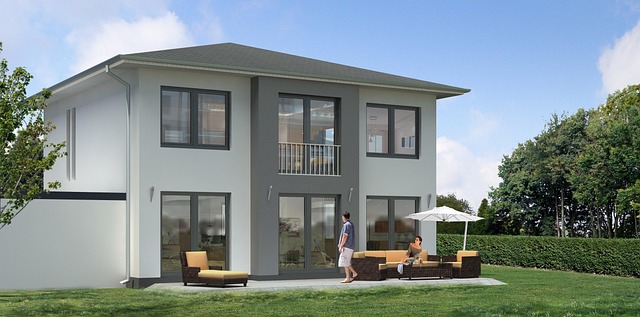Furniture 3D modeling is transforming interior design across residential, commercial, and hospitality sectors by creating hyper-realistic digital prototypes that enhance decision-making, streamline processes, and deliver seamless aesthetics and functionality, ultimately enriching user experiences.
“Discover how custom 3D modeling is transforming interior design across residential, commercial, and hospitality sectors. In this comprehensive guide, we explore the revolutionary impact of furniture 3D modeling, highlighting its ability to enhance visual representation and streamline design processes. From precise residential customizations to immersive hospitality visuals, learn how advanced modeling techniques are pushing industry boundaries. Get ready to dive into a future where space planning and client visualization reach unprecedented levels of realism.”
Revolutionizing Spaces: The Power of Furniture 3D Modeling
In today’s digital era, custom 3D modeling is transforming the way we visualize and design interiors. One of its most impactful applications is in furniture 3D modeling, which revolutionizes spaces by offering unparalleled realism and functionality. By creating precise digital representations of every detail, from intricate designs to specific dimensions, furniture 3D modeling allows designers and clients to explore and interact with virtual prototypes before physical production begins.
This innovative process streamlines the design phase, enabling quicker decision-making and adjustments. It also facilitates better communication between designers, architects, and clients, ensuring that the final product meets expectations. With furniture 3D modeling, residential, commercial, and hospitality spaces can be elevated to new heights, offering guests and residents an immersive experience that blends aesthetics, comfort, and practicality.
Customization Techniques for Residential Interiors
In the realm of residential interior design, custom 3D modeling plays a pivotal role in bringing unique spaces to life. By utilizing advanced furniture 3D modeling techniques, designers can craft and visualize bespoke pieces that perfectly suit the client’s vision. This process involves creating detailed digital representations of every element, from elegant curved sofas to intricate corner cabinets, ensuring each component seamlessly integrates with the overall aesthetic.
The customization journey begins with understanding the client’s preferences and lifestyle requirements. Designers then employ specialized software to model not only furniture but also architectural elements, providing a comprehensive virtual environment. This allows for real-time adjustments, ensuring the final result aligns perfectly with the desired ambiance. With custom 3D modeling, residential interiors become a canvas for personalized expression, where every detail is tailored to create a harmonious and inviting space.
Commercial Spaces: Elevating Design with 3D Technology
In the realm of commercial spaces, custom 3D modeling is transforming interior design landscapes. By leveraging cutting-edge furniture 3D modeling technologies, designers and architects can bring concepts to life with unparalleled accuracy and visual appeal. This innovative approach allows for precise visualization of layouts, material choices, and finishings before construction begins, enabling informed decision-making and cost savings.
The integration of 3D technology in commercial spaces offers a myriad of benefits. It facilitates the creation of immersive digital prototypes, helping clients envision the final product with greater clarity. Moreover, it streamlines the design process by enabling quick modifications and iterations, ensuring projects meet aesthetic and functional expectations. With realistic renderings and virtual walkthroughs, stakeholders can experience the space firsthand, fostering collaboration and enhancing overall project outcomes.
Hospitality Industry's Embrace of Immersive Furniture Visuals
The hospitality industry has embraced immersive furniture visuals, revolutionizing how spaces are designed and experienced. With the power of custom 3D modeling, designers can now create photorealistic renderings of furniture and interior layouts, offering clients a virtual preview of their future environments. This technology allows for more informed decision-making, as guests or business owners can visually explore different design options before investment, ensuring that the final product aligns with expectations.
Furniture 3D modeling has become an indispensable tool in creating captivating and realistic visuals, from luxurious hotel rooms to trendy restaurant interiors. It enables designers to showcase intricate details, play with lighting and textures, and even simulate human presence within the space. By leveraging this technology, hospitality businesses can enhance their marketing efforts, providing potential customers with a unique and engaging experience that sets them apart in a competitive market.
Custom 3D modeling is transforming interior design across residential, commercial, and hospitality sectors. By leveraging furniture 3D modeling techniques, professionals can create immersive visuals, enhance client experiences, and streamline design processes. This innovative technology is revolutionizing space planning, ensuring that every detail aligns with the vision for any project.
